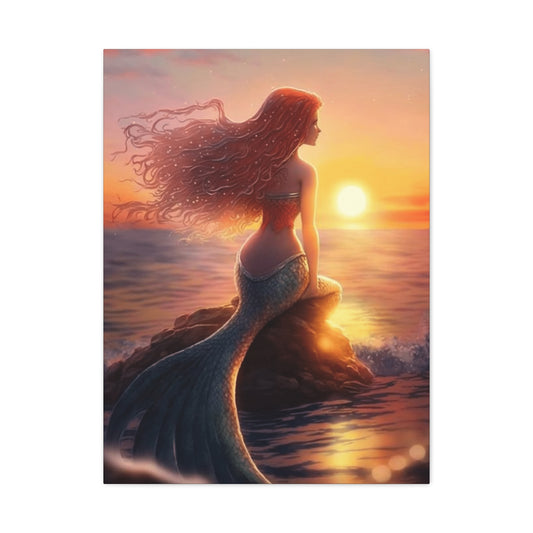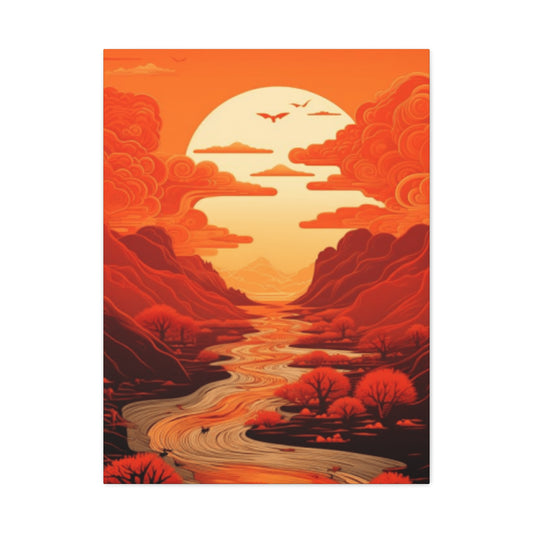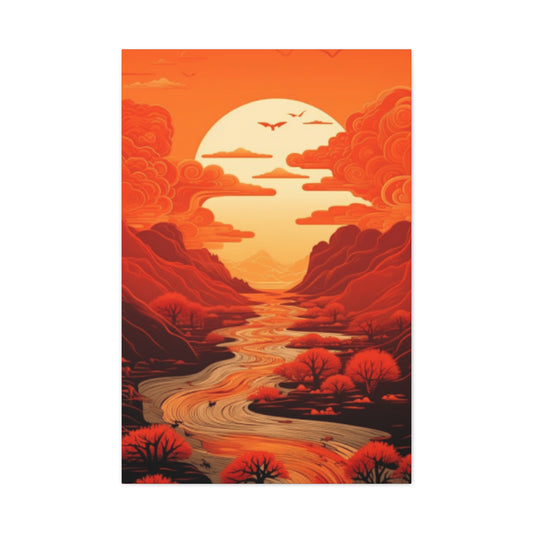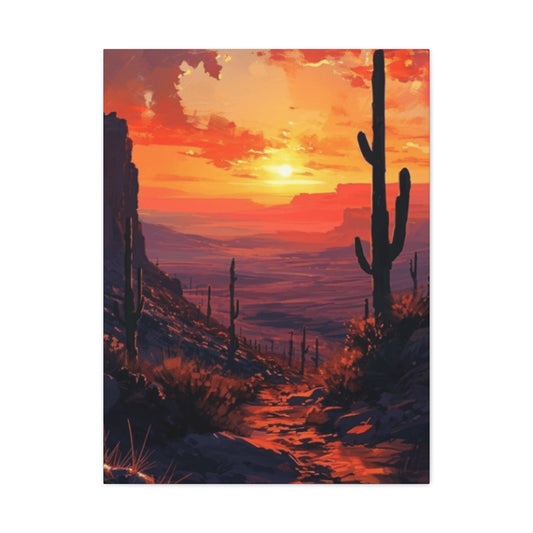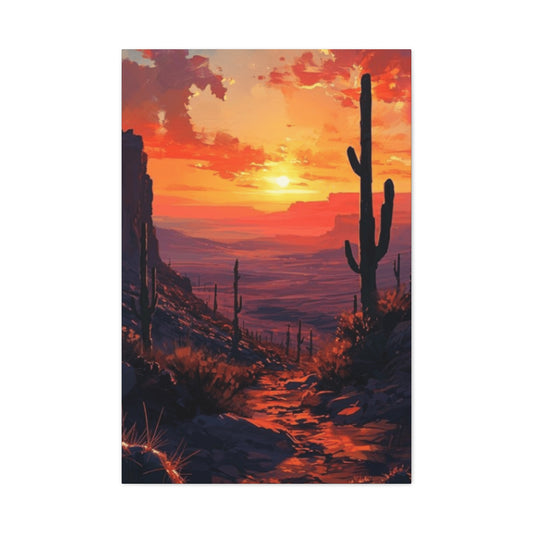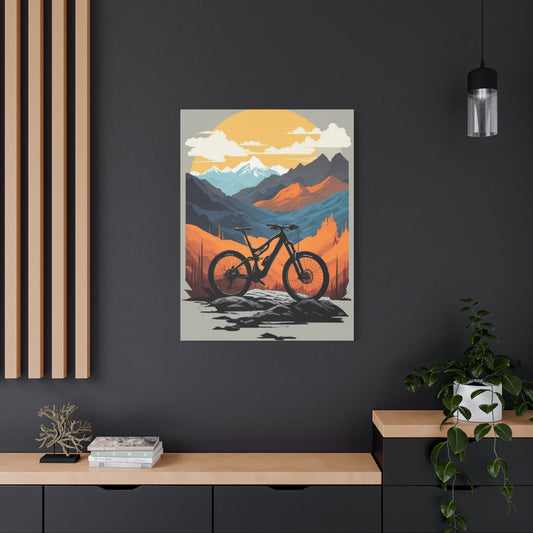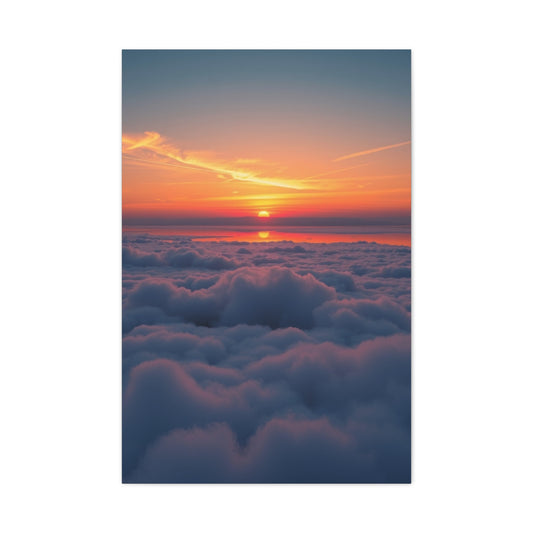Photography stands as a timeless dialogue between fleeting moments and enduring memory. Over the centuries, countless photographers have wielded their cameras not merely as tools, but as extensions of their vision — creating images that resonate through history. Some captured raw human emotion, others revealed hidden facets of the world around us, but all of them left indelible marks on the visual arts.
Even though many of these visionaries have transcended the mortal plane, their philosophies, techniques, and masterpieces continue to illuminate creative paths for new generations. Whether you are a novice photographer seeking inspiration or a seasoned practitioner yearning for deeper insight, studying the works of these luminaries provides a wellspring of wisdom.
Here, we celebrate 29 iconic photographers whose contributions have permanently altered the trajectory of visual storytelling.
Masters Who Changed the Face of Photography
Photography, as an evolving art form, owes its richness and diversity to a constellation of brilliant visionaries who challenged conventions and reimagined the possibilities of visual storytelling. Their contributions did not merely capture moments; they fundamentally altered how we perceive reality through the lens. In this section, we explore nine iconic photographers whose impact continues to reverberate through the corridors of artistic history.
Cindy Sherman: Chameleon of Modern Identity
Cindy Sherman stands as a titan in the exploration of identity through photography. A master of self-transformation, Sherman uses her own image to embody an astonishing range of personas—each meticulously constructed with costumes, makeup, and setting. Her work questions the constructs of femininity, celebrity, and societal expectation, pulling deeply from the visual languages of film, advertising, and art history.
Through series like Untitled Film Stills, Sherman unpacks the archetypes assigned to women in media, exposing their artificiality and absurdity. Rather than seeking authenticity, she revels in artifice, positioning photography not as a recorder of truth but as a potent stage for performance. Sherman's enduring influence lies in her ability to provoke reflection on how images shape our understanding of identity in a saturated visual culture.
Ansel Adams: Guardian of the American Wilderness
Few names are as synonymous with landscape photography as Ansel Adams. His towering black-and-white images of the American West, particularly the majestic vistas of Yosemite National Park, are etched into the cultural consciousness. Adams’ technical innovations, notably the development of the "zone system," revolutionized photographic exposure and printing, enabling photographers to capture a fuller range of tonal subtleties.
Adams’ artistry was matched by his environmental advocacy. He saw his photographs not just as artistic expressions but as instruments for conservation, rallying support for the protection of wild spaces. In Adams’ hands, photography became a clarion call, compelling viewers to cherish and safeguard the fragile splendors of the natural world.
Yousuf Karsh: Sculptor of Light and Humanity
Yousuf Karsh elevated portrait photography into the realm of fine art with his meticulously composed, psychologically penetrating images. His ability to manipulate light and shadow imbued his portraits with a three-dimensional, almost sculptural quality. More than mere likenesses, his photographs revealed the inner character of subjects ranging from statesmen like Winston Churchill to intellectual giants like Albert Einstein.
|
Related Catagories: |
Karsh's sessions were often intense psychological duels, where he worked relentlessly to break through the façades his subjects presented. The resulting images, marked by technical brilliance and emotional depth, captured not just faces but legacies. His portrait of Churchill alone, with its defiant scowl and indomitable spirit, helped crystallize the image of wartime resilience.
Robert Frank: Poet of the American Street
Robert Frank's landmark work The Americans redefined both the aesthetic and narrative potential of photography. Traveling across the United States in the 1950s, Frank produced a body of work that eschewed the idealized, polished imagery of mainstream media. Instead, he offered a raw, sometimes unsettling portrait of a nation grappling with inequality, alienation, and contradiction.
Frank's visual language was radical: grainy textures, tilted horizons, fleeting glances, and candid moments. His style echoed the improvisational energy of jazz and the fractured narratives of Beat literature. His influence cascades through generations of street photographers and documentary artists who continue to seek authenticity in the overlooked corners of life.
Annie Leibovitz: Portraitist of Modern Icons
Annie Leibovitz possesses an uncanny ability to capture the mythos of her subjects while simultaneously peeling back the layers to reveal their humanity. Known for her richly staged, cinematic compositions, Leibovitz redefined celebrity portraiture by blending storytelling with visual spectacle.
From her haunting final portrait of John Lennon entwined with Yoko Ono to her fantastical recreations of fairy tales with Hollywood stars, Leibovitz’s work transcends mere image-making. Each photograph becomes a carefully orchestrated narrative tableau, inviting viewers to glimpse not just the public persona but the private dreamscape of her subjects. Her distinctive style has left an indelible mark on the visual culture of magazines, advertising, and fine art.
Henri Cartier-Bresson: Architect of the Decisive Moment
Henri Cartier-Bresson's philosophy of the "decisive moment" remains one of the most influential ideas in photographic history. Armed with a Leica camera, Cartier-Bresson sought to capture those ephemeral instances when the elements of a scene aligned perfectly to create a meaningful composition.
His candid photographs, often taken in the streets of Paris, India, and Mexico, display a profound understanding of geometry, rhythm, and human emotion. Cartier-Bresson believed that photography should be spontaneous, unmanipulated, and respectful of the integrity of the subject. His work laid the foundation for modern photojournalism and documentary photography, inspiring countless successors to blend artistry with immediacy.
Richard Avedon: Chronicler of American Essence
Richard Avedon's career traversed the worlds of fashion, portraiture, and documentary photography with an uncompromising vision. In his early work for Harper’s Bazaar, Avedon injected energy and movement into fashion imagery, moving models beyond static poses into lively, narrative scenes.
Later, in projects like In the American West, Avedon turned his lens toward everyday people, capturing farmers, miners, and drifters against stark white backgrounds. Stripped of context and adornment, his subjects confronted the viewer with raw vulnerability. Through both glamour and grit, Avedon’s images probe the complexities of identity, beauty, and mortality in the American experience.
Eliot Porter: Pioneer of Color in the Wilderness
While Ansel Adams championed the power of black-and-white landscapes, Eliot Porter embraced the vibrant intricacies of the natural world through color photography. A trained scientist, Porter approached nature with both analytical precision and poetic sensitivity.
His photographs of forests, rivers, and birdlife shimmer with rich hues and delicate textures, celebrating the interconnectedness of life. Porter's 1962 book In Wildness Is the Preservation of the World—a series of photographs paired with quotes from Henry David Thoreau—helped to legitimize color photography as a serious artistic medium. His work stands as a luminous testament to the fragile beauty of untouched ecosystems.
Imogen Cunningham: Botanical Elegance and Beyond
Imogen Cunningham’s career, spanning seven decades, reflects an unceasing curiosity and willingness to challenge aesthetic norms. Initially known for her soft-focus pictorialist images, she later became a champion of sharp-focus modernism as a founding member of Group f/64.
Cunningham's botanical studies, such as her detailed photographs of magnolia blossoms, reveal a sensual appreciation for organic form and structure. Her candid portraits and industrial landscapes further demonstrate her versatility. Whether capturing the velvety curves of a flower petal or the stoic determination of a laborer, Cunningham infused her work with both technical mastery and deep humanism
David Bailey and Visionaries Across Diverse Realms of Photography
David Bailey’s name resonates strongly in the annals of fashion photography, particularly in capturing the vibrant and rebellious energy of London’s “Swinging Sixties.” His approach to photography was bold, raw, and minimalist, helping to redefine the very essence of visual storytelling. This chapter of photography history, marked by revolution in both style and substance, has shaped the visual language of an era. But Bailey was not alone in his endeavor to push boundaries. Around him, a group of photographers similarly transformed the medium. Let’s delve deeper into the works of these photographic visionaries who revolutionized their respective fields and left lasting legacies that continue to inspire.
David Bailey: Capturing the Spirit of the Sixties
David Bailey is a name synonymous with the birth of modern fashion photography. His minimalist approach, characterized by stark black-and-white portraits and straightforward compositions, stood in sharp contrast to the heavily staged and polished imagery that dominated commercial photography at the time. Bailey’s work infused photography with a raw, unvarnished energy that captured the essence of the 1960s — an era brimming with youthful rebellion, experimentation, and liberation.
His most iconic works are often associated with his ability to freeze moments of genuine personality, often bringing out the intimacy of his subjects in a way that few photographers dared at the time. Through his lens, he transformed ordinary models and musicians into larger-than-life icons. His ability to capture candid, emotionally charged moments helped redefine celebrity portraiture and added depth to fashion imagery.
Bailey’s images of fashion icons such as Jean Shrimpton, Twiggy, and Mick Jagger became iconic representations of the decade’s youthful exuberance and rebellion. These portraits didn’t just show the clothes or the face — they captured the spirit of a time, a cultural upheaval that would define the modern world for decades to come.
Frans Lanting: Interpreter of the Natural World
Frans Lanting’s wildlife photography is a poetic celebration of nature’s beauty and fragility. His work, often featured in National Geographic, captures the intricate, interconnected ecosystems of our planet, shedding light on the delicate balance between life forms and their environment. Lanting’s approach is not simply documentary; it is an artistic reflection that adds a layer of depth and reverence to the creatures he portrays.
Through his stunning visual compositions, Lanting invites viewers to experience nature in its purest, most awe-inspiring form. His use of light, color, and timing transforms mundane moments into breathtaking works of art, whether capturing the vibrant feathers of a bird in flight or the quiet grace of a wandering elephant. Lanting’s photography does more than showcase nature; it reminds us of our responsibility to preserve it.
Paul Strand: Founding Father of Modernist Photography
Paul Strand’s influence on modernist photography cannot be overstated. He was a pioneer who helped elevate photography as an artistic medium, moving it away from mere documentation and into the realm of fine art. Strand’s work spans a wide range of genres, from intimate street portraits to abstract landscapes, and his innovative approach was crucial in the development of photography as a serious artistic practice.
Strand’s vision was to use photography as a means of conveying deeper truths about human experience. He did this by blending formal abstraction with deeply personal and political storytelling. His images reflect a commitment to the social and political issues of his time, including the impact of industrialization and the human condition. Strand’s ability to fuse art with activism helped reshape the medium and inspire future generations of photographers.
Weegee: The Dark Chronicler of Urban Life
Arthur "Weegee" Fellig’s name became synonymous with gritty, unflinching street photography that captured the underbelly of New York City in the 1930s and 1940s. Known for his relentless pursuit of sensational urban stories, Weegee’s photographs often depict scenes of crime, tragedy, and the raw realities of city life. His ability to document moments of chaos with a detached, clinical eye led to his reputation as one of the most influential photojournalists of the time.
Weegee’s work is characterized by its immediacy and stark realism. His images are intense and visceral, capturing not just the drama of the moment but the human cost of urban existence. His candid photographs, many of which were shot at crime scenes or during emergency responses, challenge the viewer to confront uncomfortable truths about society. Weegee’s camera was a tool for exposing the dark and untold stories of city life, making him a pioneer in photojournalistic storytelling.
Steve McCurry: The Human Storyteller
Steve McCurry is perhaps best known for his iconic photograph of the Afghan Girl — a portrait that embodies the power of human emotion and connection. His vivid, emotionally resonant portraits convey a deep understanding of humanity, capturing fleeting moments of joy, sorrow, resilience, and peace. McCurry’s photography often focuses on the human experience, with particular emphasis on those caught in the throes of war and displacement.
Through his work, McCurry has traveled to some of the most conflict-ridden regions of the world, documenting not only the struggles of his subjects but also their enduring hope and strength. His use of vibrant color and his ability to capture intimate moments of connection has made him one of the most celebrated photographers in the world.
Man Ray: Surrealist Visionary
Man Ray’s influence extends far beyond his photography, as he was a central figure in the Dada and Surrealist movements. His experiments with photograms, which he called “rayographs,” allowed him to break free from the constraints of traditional photography. By placing objects directly onto photographic paper and exposing them to light, he created abstract, otherworldly images that blurred the line between photography and fine art.
Man Ray’s ability to merge photography with surrealism and abstraction expanded the boundaries of what was considered possible in visual arts. His avant-garde works have continued to inspire photographers and artists alike, pushing them to experiment with unconventional techniques and concepts.
David LaChapelle: Alchemist of Pop Culture
David LaChapelle’s photographic style is defined by its vivid, hyper-realistic compositions that blur the line between high fashion, pop culture, and surrealism. Known for his lavish and often provocative imagery, LaChapelle redefined the relationship between commercial photography and fine art. His work is bold, exuberant, and often critiques societal issues, while also celebrating the hedonistic excesses of modern life.
LaChapelle’s photography references everything from religious iconography to art history, creating powerful narratives that are as whimsical as they are thought-provoking. His striking color palette and larger-than-life compositions continue to set him apart as one of the most influential commercial photographers of our time.
Robert Capa: Historian of Conflict
Robert Capa's legendary career as a war photographer is marked by his ability to capture the humanity behind the horrors of war. Known for his work during the Spanish Civil War and the D-Day landings of World War II, Capa’s photographs provide a visceral, ground-level view of conflict, focusing on the raw emotions of soldiers and civilians alike.
Capa’s most famous dictum — "If your pictures aren’t good enough, you’re not close enough" — speaks to his relentless pursuit of truth and his willingness to put himself in harm’s way. His work transcended journalism, becoming an enduring testament to the courage, sacrifice, and suffering inherent in human conflict.
Don McCullin: Unflinching Eye of the Human Condition
Sir Donald McCullin’s images, often stark and unflinching, document the human cost of war, poverty, and societal disintegration. His work, which spans decades, explores not just the suffering of those caught in conflict but also the quiet moments of grace and survival in the most harrowing circumstances. His black-and-white photographs are a testament to the resilience of the human spirit.
McCullin’s legacy lies in his uncompromising dedication to social justice and his ability to convey the truth of human suffering with a degree of empathy that few other photojournalists have achieved. His work remains a powerful reminder of the world’s harsh realities and the role of photography in confronting injustice.
Edward Weston: Sculptor of Form
Edward Weston’s career was defined by his profound reverence for natural forms. Whether capturing the curves of a seashell, the folds of a woman’s body, or the texture of a sand dune, Weston’s photography reveals the sculptural qualities inherent in nature. His minimalist compositions and use of light brought out the deepest beauty in his subjects, stripping them of unnecessary detail and allowing their forms to speak for themselves.
Weston’s work was pivotal in the development of modernist photography. His dedication to simplicity, precision, and the exploration of form paved the way for later generations of photographers who sought to explore the visual potential of photography beyond mere representation.
Anne Geddes and Timeless Innovators of Photography
Anne Geddes is one of the most beloved and recognized photographers in the world, especially known for her whimsical, magical portrayals of newborns. Through her art, she evokes innocence and tenderness, capturing the essence of new beginnings with warmth and imaginative flair. Her works, often featuring babies in playful settings such as nestled in flowers or adorned with delicate props, have touched hearts globally. But Geddes is only one of many legendary photographers whose contributions transcend the art form, leaving an indelible mark on the world of visual storytelling.
From capturing moments of hardship to crafting powerful visual metaphors for society, these photographers have created some of the most memorable and influential images in history. Below, we explore the impact of several of these trailblazers, whose creative visions have forever shaped how we view the world through the lens.
Anne Geddes: Celebrator of New Beginnings
Anne Geddes’ name has become synonymous with newborn photography. Her art goes beyond capturing the mere visual representation of babies; it celebrates the purity, wonder, and joy of early life. Geddes is best known for her meticulously styled portraits where infants are often nestled in whimsical settings, such as flowers, nests, and soft fabrics. These endearing compositions have a magical quality, where the softness of the baby is delicately intertwined with nature’s elements.
|
Related Catagories: |
Her approach transcends the typical newborn photography. Geddes employs an almost surreal storytelling technique to weave together innocence, beauty, and fantasy, creating timeless imagery that has become deeply ingrained in the collective cultural consciousness. She not only captures the essence of infancy but also elevates it to a form of art that resonates with universal tenderness. Her iconic photographs are not merely snapshots; they are expressions of joy, optimism, and the boundless potential of life.
What sets Geddes apart is not just the technical brilliance of her work but the emotional depth she evokes. Her portraits touch the hearts of viewers, inviting them to reflect on the fleeting nature of childhood and the preciousness of each moment. By transforming newborns into living embodiments of fantasy and tenderness, Geddes has made a profound contribution to the art of capturing new beginnings.
Dorothea Lange: Chronicler of American Hardship
Dorothea Lange’s name is inseparable from the history of American photography, particularly for her groundbreaking work during the Great Depression. Lange's photographs provided a stark, unvarnished look at the suffering and resilience of displaced Americans during a time of widespread economic collapse. With empathy and a profound understanding of the human condition, Lange’s images told the stories of migrant workers, struggling families, and the destitute, revealing the quiet dignity that often went unnoticed in times of adversity.
One of Lange’s most iconic images, Migrant Mother, has become a symbol of the Great Depression, representing not just the suffering of a single mother but the collective struggles of millions. Her ability to capture the raw emotion and humanity of her subjects was unparalleled, and her work remains a crucial piece of visual history. Lange didn’t just document the lives of ordinary people; she elevated them, bringing their stories to the forefront and urging the public to see beyond statistics and labels.
Lange’s work for the Farm Security Administration (FSA) not only influenced generations of documentary photographers but also helped shape the public’s understanding of social injustice. Her photography became a powerful tool for social change, encouraging action and fostering empathy during one of America’s darkest times.
Robert Doisneau: Romantic of the Parisian Streets
Robert Doisneau’s photographs reflect an enduring affection for the everyday moments that give life its rhythm and charm. Known for his candid and playful images of Parisian street life, Doisneau captured the humor, intimacy, and vibrancy of the city in a way that few others could. His work, often infused with an underlying sense of irony, presents life’s most tender moments: lovers kissing in the rain, children playing, and fleeting exchanges between strangers.
Unlike other photographers who sought to document history’s great moments, Doisneau found his subjects in the simplicity of the everyday. He understood that there is poetry in the mundane, beauty in the unnoticed, and significance in the fleeting. His most famous photograph, Le Baiser de l'Hôtel de Ville (The Kiss by the Hôtel de Ville), encapsulates the Parisian ideal of love, captured with spontaneity and passion.
His influence on photojournalism and humanist photography is immeasurable. Through his lens, Doisneau celebrated the joy and complexity of ordinary people, reminding us that the most profound stories can unfold in the most everyday of moments.
Mario Testino: Purveyor of Modern Glamour
Mario Testino’s name is virtually synonymous with glamour. Known for his striking portrait photography, Testino has worked with an impressive roster of celebrities, models, and royalty, including iconic figures like Princess Diana, Kate Moss, and Madonna. His fashion photography exudes opulence, sophistication, and elegance, capturing his subjects in an aspirational yet intimate light.
What sets Testino apart is his ability to marry commercial appeal with fine art sensibilities. His images are not only visually stunning but are layered with personality and insight into his subjects. Testino’s photographs evoke emotion through their simplicity, playing with light, expression, and form in ways that turn each image into a timeless masterpiece.
Testino's work reshapes the conventions of portraiture, transforming celebrities and models into cultural icons. His lasting impact on fashion and editorial photography has made him a leading figure in the world of high glamour, where beauty and artistry intersect.
André Kertész: Visionary of Abstract Realism
André Kertész’s photography straddled the worlds of abstraction and realism, creating images that were both visually arresting and deeply philosophical. His unique perspective on street and documentary photography pioneered the exploration of form, light, and shadow in ways that were ahead of their time. Kertész’s approach to photography was revolutionary — he saw beyond mere representation and embraced the potential of abstraction, capturing the essence of subjects through dynamic compositions.
His use of unusual angles, surreal compositions, and a keen eye for everyday moments elevated his street and portrait photography to new artistic heights. Kertész’s influence on subsequent generations of photographers is profound, with his work offering a blueprint for photographers who sought to explore the deeper layers of human existence through visual expression.
Kertész’s photographs were not about capturing clear, defined subjects; they were about evoking emotions and creating compositions that transcend the specific moment. His legacy lives on in the way modern photographers approach the art of abstraction and realism.
Andreas Gursky: Architect of Monumental Scale
Andreas Gursky’s photography is synonymous with the exploration of scale and modern life. Known for his large-format architectural and landscape photographs, Gursky creates images that convey the immense complexity of globalized society. His towering photographs often depict crowded spaces, commercial landscapes, and vast structures, inviting the viewer to engage with the overwhelming scale of contemporary existence.
What makes Gursky’s work stand out is his use of digital manipulation to further enhance his already meticulously composed images. By manipulating the color, depth, and scale of his photographs, Gursky creates a surreal, almost dreamlike vision of modern life. His images—such as Rhein II, one of the most expensive photographs ever sold—present the modern world in all its beauty, absurdity, and enormity.
Gursky’s work challenges our perceptions of the ordinary, forcing us to confront the overwhelming scale of our modern landscapes and societal structures.
Robert Mapplethorpe: Boundary Breaker
Robert Mapplethorpe’s work is synonymous with controversy, boundary-pushing, and bold exploration of form and sexuality. His highly stylized black-and-white portraits and nudes push the limits of beauty, exploring themes of eroticism, power, and taboo. Mapplethorpe’s unflinching lens turned the human form into an object of both art and inquiry, asking the viewer to reconsider cultural norms surrounding sexuality, beauty, and the body.
In addition to his studies of the human figure, Mapplethorpe also photographed flowers, self-portraits, and celebrities, each of his images marked by an uncompromising sense of style and purpose. Though his work sparked intense debate, it also paved the way for greater acceptance of alternative forms of art. His influence is still felt today, as his work remains a symbol of both creative freedom and social defiance.
Sebastião Salgado, Brassaï, and Mick Rock: Masters of Documentary and Iconic Photography
Photography serves not only as a medium for capturing fleeting moments but also as a tool for profound cultural documentation. Through the eyes of visionary photographers like Sebastião Salgado, Brassaï, and Mick Rock, photography has transcended the realm of mere observation to become an art form capable of conveying the soul of humanity, the heartbeat of cities, and the spirit of musical revolutions. Each of these photographers has immortalized their subjects in ways that speak to universal truths about society, culture, and human nature. Their work continues to inspire generations, fostering a deeper understanding of the world through visual storytelling.
Sebastião Salgado: Documentarian of Humanity’s Soul
Sebastião Salgado’s photography is renowned for its emotional depth and its unflinching portrayal of human resilience. His black-and-white images transcend simple documentation; they elevate the subjects to figures of dignity, often capturing marginalized communities enduring untold hardships. Salgado’s work sheds light on the forgotten corners of the world, where poverty, migration, and conflict define daily life. However, it is his ability to capture the inherent humanity in these difficult circumstances that sets him apart.
One of Salgado’s most significant achievements is his long-term project, Workers, which focuses on the labor force worldwide. Through his lens, he reveals the raw realities of working men and women across different continents, emphasizing their physical endurance, their emotional struggles, and their quiet pride in their work. These intimate portraits reflect the power dynamics at play, but also the shared experience of being human. Whether photographing miners in Brazil or shepherds in Africa, Salgado’s images capture the profound connection between people and their environment.
In addition to his work on human suffering and labor, Salgado has also devoted significant attention to the beauty of the natural world. His series Genesis portrays unspoiled landscapes and wildlife, drawing attention to the fragility of our planet. Through these images, Salgado emphasizes the urgent need for environmental protection, making his work an intersection of photojournalism and environmental advocacy. His photographs of pristine landscapes serve as a reminder of the importance of conservation in the face of environmental degradation. Salgado’s ability to combine powerful social commentary with a visual narrative of breathtaking beauty makes his work a legacy that continues to shape both the art world and global discussions on human rights and environmentalism.
Brassaï: Bard of the Parisian Night
Brassaï’s photographs evoke the mysterious allure of Paris after dark, immortalizing the city's nocturnal energy with a blend of romance, melancholy, and intrigue. The Hungarian-French photographer wandered through the streets of Paris in the 1930s and 1940s, capturing the soul of the city at night. His images are bathed in shadows, lit by street lamps and the soft glow of passing cars, creating a visual atmosphere that is both eerie and poetic. Brassaï’s Paris is not just the romanticized version often seen in tourist brochures; it is raw, sometimes gritty, but always alive with stories.
Known for his work as both a photographer and a sculptor, Brassaï captured the everyday lives of Parisians with an eye for the poetic and surreal. His subjects ranged from anonymous couples in love, to the city’s street performers, musicians, and outcasts. He was especially fascinated by the underbelly of Parisian life, photographing the shadows of the night—prostitutes, thieves, and artists—creating a nuanced, unromanticized image of the city. His photo series Paris de Nuit (Paris by Night) is perhaps his most famous, presenting an alternative view of the city, where the lines between reality and fantasy blur.
Brassaï’s work explores the theme of anonymity within urban life, making it both personal and universal. His photographs allow the viewer to experience Paris not just through its famous landmarks, but through the eyes of its inhabitants. Brassaï understood that cities are not just built of brick and mortar but are, at their core, a collection of lives—some well-known, others hidden in the shadows. His ability to capture the emotional essence of the city, with all its mystery and contradictions, cements his position as one of the greatest photographers of the 20th century.
Mick Rock: Visual Storyteller of Rock ’n’ Roll
Mick Rock’s work as a music photographer helped define the visual mythology of rock music during its golden era. Known as "The Man Who Shot the Seventies," Rock’s portfolio includes some of the most iconic images of rock legends, from David Bowie and Queen to Lou Reed and Blondie. His work captures the raw energy, eccentricity, and irreverence of rock 'n' roll during its heyday, providing an intimate look at the musicians who defined the genre. Through his lens, Rock immortalized the explosive creativity, rebellious spirit, and larger-than-life personas of these cultural icons.
One of Rock’s most notable contributions is his work with David Bowie during the early years of his Ziggy Stardust persona. Rock’s photographs of Bowie in his flamboyant costumes and androgynous makeup helped to solidify the artist’s image as a pop culture icon. But Rock’s photographs were not simply about celebrity glamour; they captured the transformative power of music and the dynamic energy that defined the era. His images of Bowie, Iggy Pop, Freddie Mercury, and others are as much about the performance and stagecraft as they are about capturing fleeting moments of vulnerability and humanity.
Rock's ability to blend rock star mystique with artistic photography is what sets him apart from other music photographers. His work transcends the usual promotional shots, providing a more personal, behind-the-scenes look at the lives of the people who defined a generation. His images of performers in intimate moments—whether preparing backstage or caught in moments of repose—reveal the depth and complexity behind the personas that fans adored.
In addition to his portraits of musicians, Mick Rock’s concert photography documents the visceral power of live performances. His photos not only capture the energy of the crowds but also the intense connection between the performer and the audience. His visual storytelling is a testament to the transformative power of music and the ability of photography to immortalize such moments.
Conclusion: Illuminating Paths for Future Creators
The photographers spotlighted here represent far more than technical mastery; they embody a ceaseless pursuit of truth, beauty, and human connection. Their works remind us that photography is not merely about recording what is seen, but about revealing what is felt, questioned, and dreamt.
By immersing ourselves in their legacy, we access not only a wellspring of inspiration but also a deeper understanding of the infinite possibilities within the art of photography.
The lens is ready. The world awaits. It’s your moment to create.










